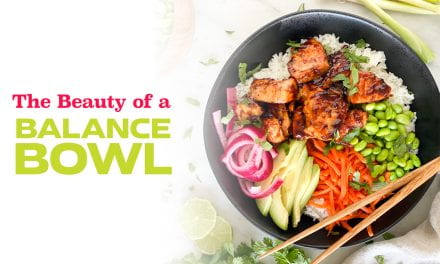Food is more than just fuel for the body. There is a social, psychological, geographical, and chemical experience when we smell, taste, and touch food. A lot of food on its own is very beneficial to a balanced intake. These items are typically snack or convenient foods we can enjoy on a break or working on an assignment to keep us occupied and satiated. A trail mix or prepared fruit and vegetables come to mind. Although, many foods on their own are quite appetizing, the preparation and flavour combinations of foods are what really excite people about cooking.
smell, taste, and touch food. A lot of food on its own is very beneficial to a balanced intake. These items are typically snack or convenient foods we can enjoy on a break or working on an assignment to keep us occupied and satiated. A trail mix or prepared fruit and vegetables come to mind. Although, many foods on their own are quite appetizing, the preparation and flavour combinations of foods are what really excite people about cooking.
For my birthday I received a cookbook titled “Salt Fat Acid Heat, Mastering the Elements of Good Cooking” by Samin Norsat. The next four months will be a book review, a four-part miniseries exploring each element and its importance according to Samin Norsat. I will share some of the recipes or tips found in the book. The 1st installment of the series will look at Salt, enjoy!
The zing! In your meal:
Salt is a mineral, NaCl on your chemistry chart, before you freak out this is not a chemistry lecture. Salt is involved in many biological processes, such as maintaining blood pressure, water distribution, nerve transmission and muscle movement. A major reason you experience the tastes you do is salts chemistry with ingredients you cook with. Norsat points out that “salt’s relationship is multidimensional: it has its own particular taste, and it enhances the flavor of other ingredients. When used properly, salt minimizes bitterness, balances out sweetness and enhances aromas”.
Types of Salt:
- Table Salt – cube shape, small, dense and very salty
- Kosher Salt – two types, Diamond Crystal and Mortons, very pure taste
- Sea Salt – Left behind when sea water evaporates, less refined fleur de sel, sel gris and maldon can take up to five years to process, better for garnishing. “bulk” sea salt better for every day cooking.
“Season from within”
Put your lab coats back on and let’s understand how salt works. Some ingredients require the right amount of time to penetrate food and distribute within it. The distribution of salt within food is explained by osmosis and diffusion, two chemical processes that are a result of nature’s tendency to seek balance. The movement of water across a cell wall from the saltier side to the less salty side is called osmosis. Diffusion is the slower process of salt moving from a saltier environment to a less salty one until evenly distributed.
How does salt affect….
Meat – Seasoning in advance gives plenty of time for salt to penetrate evenly throughout meat. Salt breaks down the protein structure allowing them to absorb and retain water as the meat cooks. Brining meat is a great example of dissolving proteins while allowing meat to absorb aromas given off by sugar and spices.
Seafood – Salting too early can degrade the proteins of most fish and shellfish. Samin recommends salting roughly 15 minutes before cooking to enhance flavor and maintain moisture.
Fat – Salt requires water to dissolve, fatty meats will take time to dissolve, season early and carefully any fatty meats.
Vegetables, Fruit and Fungi – Salt will assist in breaking down pectin, an undigestible carbohydrate found in most vegetable and fruit cells. Toss vegetables in salt and olive oil for roasting, add salt to blanching water for boiling and in to the pan for sautéing.
3 Takeaways when salting
- Time – salt is slow to diffuse so if you are cooking something large then salt early to allow the salt to penetrate
- Temperature – Heat stimulates salt diffusion, salt will diffuse more rapidly at room temperature than in the fridge.
- Water – Water promotes salt diffusion, use water to help salt penetrate tough, dry ingredients.
Caesar Dressing
Basic Mayonnaise Base
- 1 egg yolk at room temperature
- ¾ cup oil
Place egg yolk in a deep, medium metal or ceramic bowl. Roll up a damp towel and create a ring around the bowl to hold it in place while you whisk. Use a ladle or bottle with a nozzle to drip in the oil one drop at a time. GO REALLY SLOW. Do not stop whisking. Once you empty half the amount of oil in the bowl then start adding a little more at a time. If the mayo becomes too thick to whisk then add a little water or an acid (lemon juice) to thin it out.
Dressing
- 4 salt packed anchovies
- ¾ cup of basic Mayo
- 1 garlic clove, grated or pounded with a pinch of salt
- 3-4 tbsp of lemon juice
- 1 tsp of white wine vinegar
- 3 oz. chunk of parmesan, finely grated
- ¾ tsp of Worcestershire sauce
- Fresh ground black pepper
- Salt
Coarsely chop and pound the anchovies in to a fine paste. The more you break them down the better.
In a medium bowl stir together the anchovies, mayonnaise, garlic, lemon juice, vinegar, parmesan, Worcestershire and pepper. Taste with a piece of lettuce., then add salt and adjust acid as needed.
You can practice layering salt with this recipe. Add each salty ingredient a little at a time, balancing and adjusting to your taste.




